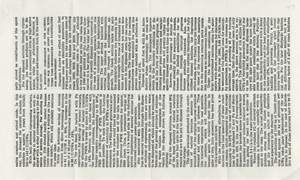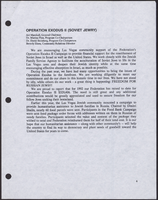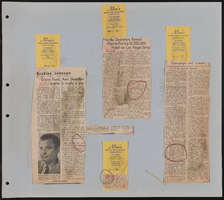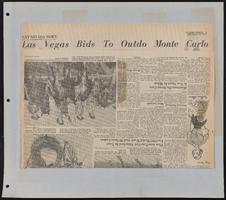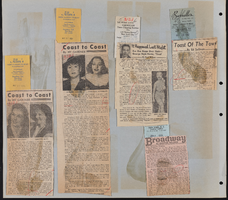Search the Special Collections and Archives Portal
Search Results

Transcript of interview with Alice Cowles Brown by Eric M. Cheese, March 31, 1981
Date
Archival Collection
Description
Text

Transcript of interview with Sharon Gutzman by Lisa Mades, March 13, 1981
Date
Archival Collection
Description
On March 13, 1981, Lisa Mades interviewed Sharon Gutzman (born in Winnipeg, Canada in 1935). Gutzman talks much about early Las Vegas, Nevada, including early businesses, the first casinos, and the first airport. She also discusses educations, shopping, recreation, entertainment, and gambling.
Text
Red Rock Canyon National Conservation Area Records
Identifier
Abstract
The Red Rock Canyon National Conservation records (1965-2007) contain information about the Red Rock Canyon National Conservation Area (previously the Red Rock Canyon Recreation Lands). It largely consists of newspaper clippings on a variety of events related to Red Rock Canyon from 1965 to 1998 with the bulk from the 1980s and 1990s. The records also include Bureau of Land Management documents pertaining to interpretive efforts, visitation statistics, and law enforcement reports. Also included are the newsletters (1990-1998) and volunteer training manual of the Friends of Red Rock Canyon, a non-profit volunteer organization.
Archival Collection

